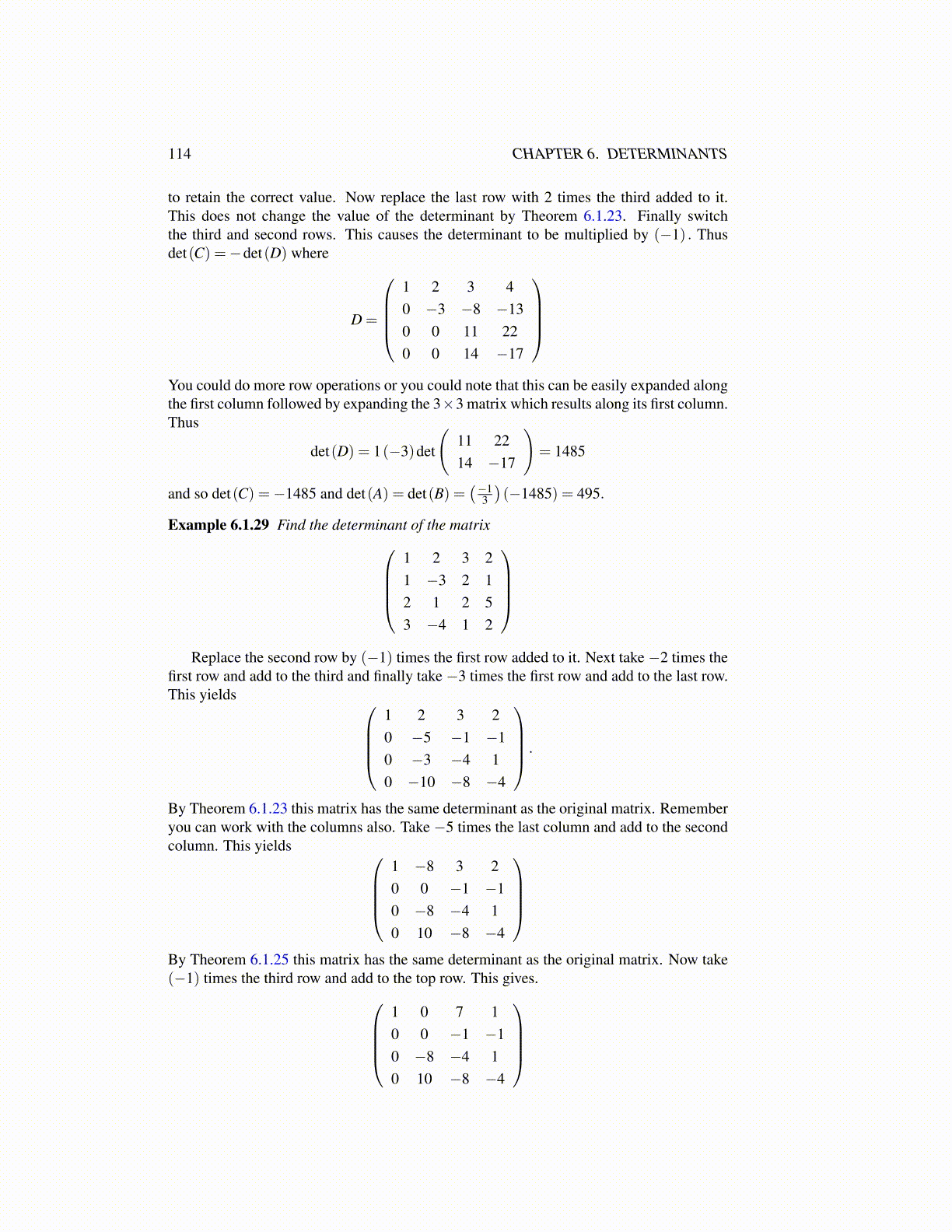
114 CHAPTER 6. DETERMINANTS
to retain the correct value. Now replace the last row with 2 times the third added to it.This does not change the value of the determinant by Theorem 6.1.23. Finally switchthe third and second rows. This causes the determinant to be multiplied by (−1) . Thusdet(C) =−det(D) where
D =
1 2 3 40 −3 −8 −130 0 11 220 0 14 −17
You could do more row operations or you could note that this can be easily expanded alongthe first column followed by expanding the 3×3 matrix which results along its first column.Thus
det(D) = 1(−3)det
(11 2214 −17
)= 1485
and so det(C) =−1485 and det(A) = det(B) =(−1
3
)(−1485) = 495.
Example 6.1.29 Find the determinant of the matrix1 2 3 21 −3 2 12 1 2 53 −4 1 2
Replace the second row by (−1) times the first row added to it. Next take −2 times the
first row and add to the third and finally take −3 times the first row and add to the last row.This yields
1 2 3 20 −5 −1 −10 −3 −4 10 −10 −8 −4
.
By Theorem 6.1.23 this matrix has the same determinant as the original matrix. Rememberyou can work with the columns also. Take −5 times the last column and add to the secondcolumn. This yields
1 −8 3 20 0 −1 −10 −8 −4 10 10 −8 −4
By Theorem 6.1.25 this matrix has the same determinant as the original matrix. Now take(−1) times the third row and add to the top row. This gives.
1 0 7 10 0 −1 −10 −8 −4 10 10 −8 −4